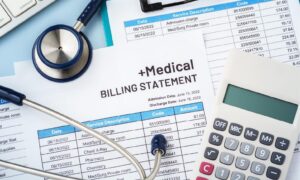If you’re in the healthcare industry, you may be familiar with terms like PHR, EHR, and EMR. Digitized healthcare solutions like these have taken ideal patient experiences to new standards. Let’s read more about each in detail.
PHRs or Personal Health Records are patients’ respective healthcare-related data that they can access and manage themselves. Patients can handle their medical information through PHR mobile apps on their phones and be more in control of their health. EHRs or Electronic Health Records are patients’ various medical records maintained by healthcare providers pertaining to clinical encounters and care data. An EHR may include the patient’s demographics, problems, medications, etc. An EMR or Electronic Medical Record is a narrower view of patients’ medical histories managed individually by medical practices. It’s more of a comprehensive report that can be shared with other medical providers with authorized access.
The importance of PHR, EHR, and EMR in healthcare
According to Accenture research, 50% of healthcare consumers say that a single bad digital experience can ruin their overall healthcare experience with the provider. PHR, EHR, and EMR systems unify patients’ data so hospitals can be more in line with their health and provide better care. Moreover, digital records can make healthcare providers’ lives dramatically easier and also improve the quality of care, increasing the importance of PHR, EHR, and EMR even further.
Advantages & impacts
What are some EMR, EHR, and PHR advantages that make these systems so important in healthcare facilities and hospitals today? Let’s take a look.
Improved data sharing
EHRs allow for a seamless sharing of patient data between different providers in hospitals, clinics, and pharmacies. Sharing complete health history digitally within seconds reduces the effort and inefficiencies associated with communication over the phone and email, and enables immediate access without any delays. Moreover, authorized access increases patient data security.
Improved accuracy
For a medical care provider to conduct a correct diagnosis, access to the complete healthcare status of the patient is necessary. While EMR and EHR can be shared among providers for correct diagnosis and consulting, a Personal Health Record from patients can uncover important information, for example, allergies. This kind of insight into patients’ health allows doctors to provide correct diagnoses and effective treatment.
Improvement in patient care
EMRs, EHRs, and PHRs make access to the complete patient data faster, enabling quick patient care, which may be especially helpful in cases of emergency. Healthcare providers can use electronic patient data to determine patient care trends, leading to improvements in the overall care process.
Improved efficiency
Access to complete health records of patients empowers healthcare providers to make more confident diagnoses and better prepare for treatment and patient care. Specialists can also be more coordinated and proactive throughout the treatment.
Improved patient engagement
PHRs facilitate better communication between patients and healthcare providers and enable sharing of health records, test results, prescriptions, etc. With this information, patients can make informed decisions about their healthcare, ask the right questions, and actively participate in their care.
Improved communication and convenience
PHR apps enable patients to access their medical data like reports, insurance information, vaccination status, prescriptions, test results, treatment courses, etc., all on their mobile phones. They also facilitate better communication between patients and the healthcare facility. EHR apps allow providers to instantly communicate critical health information from anywhere, increasing overall communication and convenience during treatments.
Cost savings
EHRs allow healthcare services to simplify documentation and patients to remain informed about all healthcare instances. As a result, patients can access their records any time they want and schedule appointments to better manage medical outcomes. This can also mean fewer unnecessary visits and improved follow-ups, which can reduce the overall cost of healthcare.
Summing up
PHRs, EHRs, and EMRs are useful for healthcare providers in organizing data and providing better treatments. Similarly, they also improve care experiences and put patients more in control of their health. And many other in-built features in digital record solutions are available in the market today that can make both patients’ and providers’ lives easy. With a little time investment, you can do your research and find out the one that works best for you.



































